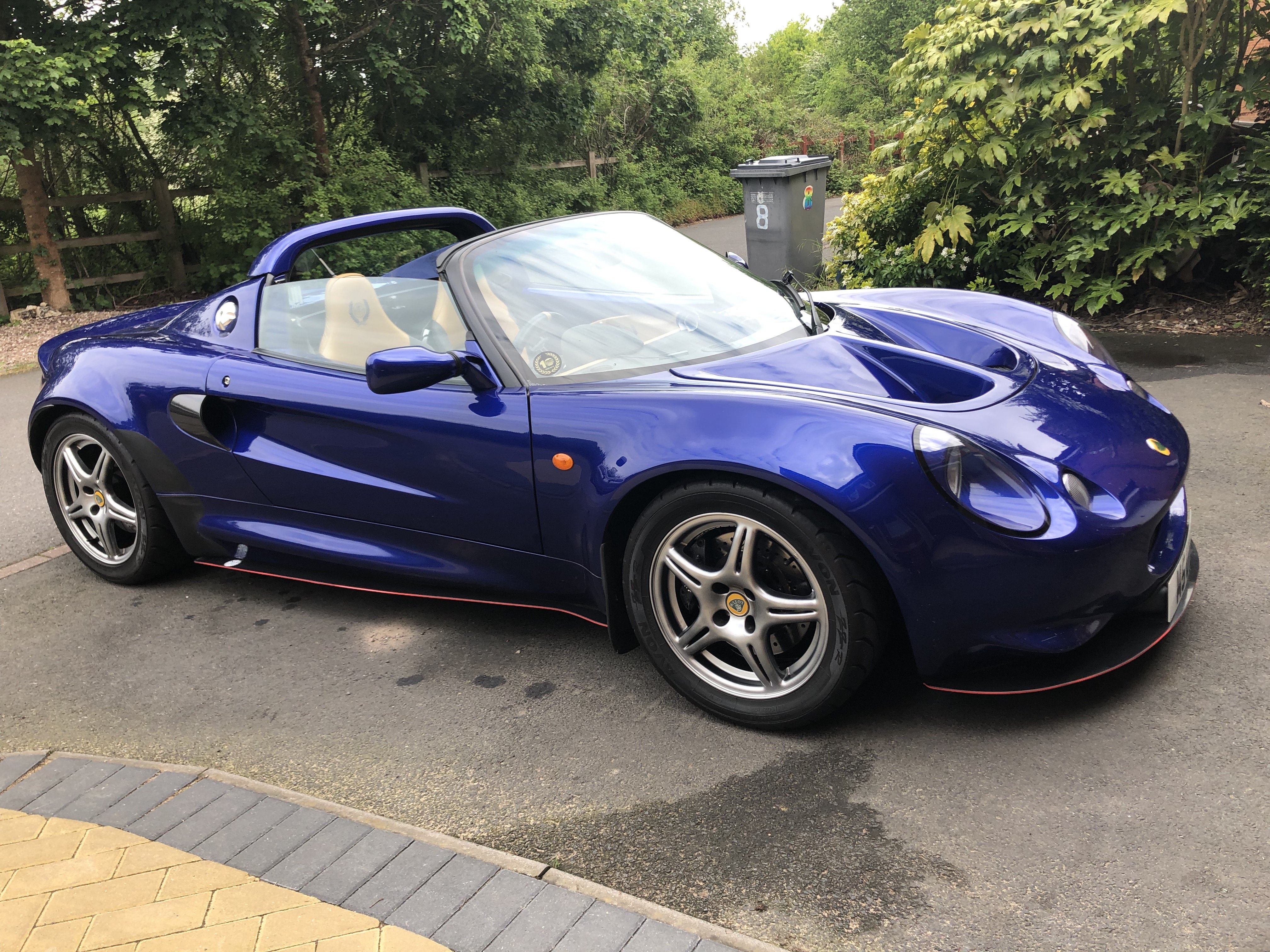Charge Cooling
As per my other blog entries, as it stands the car now runs about 317bhp on the Jackson Racing Super Charger and oil cooler.
I am still running Stark's standard 4:2:1 exhaust manifold as I am yet to convince myself that I can shell out the £1K plus for a 4:1 system (watch this space ![]() )
)
Anyway, as always I try to do something new/ different when it comes to the upgrades, only in name of 'why not'.
So once I decided that I want to go down the CC route, it was a matter of deciding whether to go with the tried and tested route of a sandwich core or go for the in-core solution.
Sandwich core solution
As far as I can make it out, majority of SC Honda'd Elises out there have gone for the ProAlloy CC solution with the core sitting between the intake manifold and the SC.
Advantages
1. Due to core's placement, all air coming through the manifold passes through the core before hitting the SC. This optimises the air cooling capabilities.
2. This is a well baked in solution and has been tried and tested by various companies and well proven on road and track.
Disadvantage
1. I can only really think of one. Due to it's placement as above, the SC ends up sitting a little higher than original.
in-core Aftercooler solution
As made and produced by Mercracing.
http://mercracing.ne...tercooler-core/
Advantages
1. The core sits inside the SC and therefore removing the need to raise the SC up, taking up more room in the engine bay
2. Very simple installation. The core and plate, replaces the blanking plate at the bottom of the SC.
3. Very good price point.
Disadvantages
1. As the core sits inside the SC, there is a concern that it will reduce the effective volume of the SC and therefore impact the amount of air available to be pushed into the engine.
2. As the core sits inside the SC, it may act as a barrier effectively blocking the air coming into the SC
3. Although there is an additional plate, there is a chance that not all air will actually travel through the core and therefore cooled.
The kit list
My shopping list for the CC installation included:
1. Proalloy pre-rad
2. Two new fans (these are smaller than original to allow them to fit under the pre-rad)
3. Bosch electric water pump
4. Hoses and clips
5. CC tank resevoir
6. Core CC/ Aftercooler core
That's pretty much it for the CC.
Since the car was going to be pretty much in bits, I had some additional bits to go on...
1. DrH SC intake
2. Header Tank relocation ( including the bracket)
The Installation
As I have very limited time these days, I had to get someone else to carryout the work, so it was back to Gavin at Unit 4 and left the car in his capable hands.
The plan was to run:-
Core -> remote tank -> water pump -> pre-radiator -> core
The first task for Gavin was to remove both clams to allow an hindered access to all areas around the car.
The back...
The Front...
Prep Activities
1. Remove the main radiator - the pre-rad sits under the original radiator on the S1
2. Drill the holes on the right hand side of the car for the supply and return for the water runs
3. Install the grommets on the clam to stop the clam cutting the hoses over time.
4. Strip back the wiring loom to allow the AIT sensor to be relocated to the bottom of the SC, reading directly from the core.
The installation
1. Gavin run the two pipes through the chassis and the holes on the right hand side of the car linking the back to the front. This was pretty fiddly and perhaps one of the more difficult part of the installation.
2. Removed the old fans off the radiator
3. Installed the new, smaller fans on the pre-rad and then mounted the pre-rad onto the radiator.
4. Drilled two holes on the left hand side of the radiator cowl to allow access for the pre-rad supply and return pipes
5. The whole radiator assembly then gets installed with the pre-rad supply and return on the right hand side of the car.
6. Then he removed the SC and unbolted the blanking plate at the bottom of the intake manifold.
7. The aftercooler then gets mounted directly under the manifold with the core inside. Gavin used a new gasket and some liquid gasket to ensure no air leakages.
Core installed...
Note that the SC brace gets re-located to the bottom of the CC core.
8. The SC gets re-installed back in position and the pipes run from the supply and return pipes under the car.
Note: The space under the SC is very tight. There are various pipes running through there and getting enough clearance to allow the additional two pipes for the CC water supply is tricky. Gavin spent majority of a day getting the runs to work.
9. The remote header tank and Bosch water pump installed on the right hand side of the car, just behind oil filter.
Note: With hindsight, I should have opted to install a air bleed point somewhere near the remote tank. Without it, its making bleeding the system pretty hard work.
Also note that the pump is wired through a relay triggered by the fuel pump. This way, the water pump will only run when the fuel pump is running.
10. Fill up the system with coolant and run the pump. It will take some time to bleed the system and raising the rear, ie the highest point on the system will help with encouraging the bubbles to flow out to the tank reserve. Keep topping it up until all trapped air is removed.
Engine Coolant Reservoir Tank Relocation
In able to install Dr.H's straight through SC inlet manifold, the coolant tank has to be relocated to somewhere near the boot side of the engine bay.
Now, this is something that has been done several times elsewhere, however I opted for Dr H's (AKA Leigh) mounting bracket.
This was one of the more straight forward installations. Gavin tapped in a new bolting point and mounted the bracket as far back as possible.
This also provided an opportunity to tidy-up the fuel pump location, some of the fuel pipping around the area.
Note: In simple terms, in relocating the reservoir tank, all that you are doing is moving the T piece further up the line.
The installation looks pretty good. In time, I may decide to change the remaining red hoses for black, especially given the fact that all my original bling is all gone. ![]()
DrH's SC Manifold
A little background first. The inlet standard JRSC inlet is rather restricted. Whether the design was driven by necessity, ie due to its placement in Civic Type R engine bay or due for something a little bit more scientific, I am not sure. What is clear, the air being pulled through the standard manifold has to work in, up and then in before hitting the main manifold chamber.
Dr H's intake changes this by opening up the flow and removing all the unnecessary bends etc.
The intake...You got to love that red
Attached to the supercharger...
Installed on the car, before the bolting on of the throttle body and air intake pipe...
With the throttle body in place...
This solution is not tried and tested and myself and few others who went down this option are going to be testing as we go along. We are all excited to see whether or not this solution will yield any more power.
Final Result
The final results look really good. Curiously, the supercharger seems really quite compared to how it was prior to the upgrade and there is a thought that this is mainly due the new intake. We shall see.
Next step, dyno. ![]()
I am pretty happy with this.
![]()
Quick Update
I had the car re-mapped and I am really pleased with the numbers.
So, what did it make? In the end, the car produced 324bhp, with a small increase in torque! Given the setup and the 4:2:1 exhaust which must be on its limit, the numbers are pretty impressive. Romain felt that he could have pushed the engine a little bit further, but decided to keep the map on the safe side.
What is interesting, he felt that with a smaller pulley, the engine would produce a lot more power.
But for now, I am happy.
The graph can be seen here.
Nice.




























0 Comments
Recommended Comments
There are no comments to display.